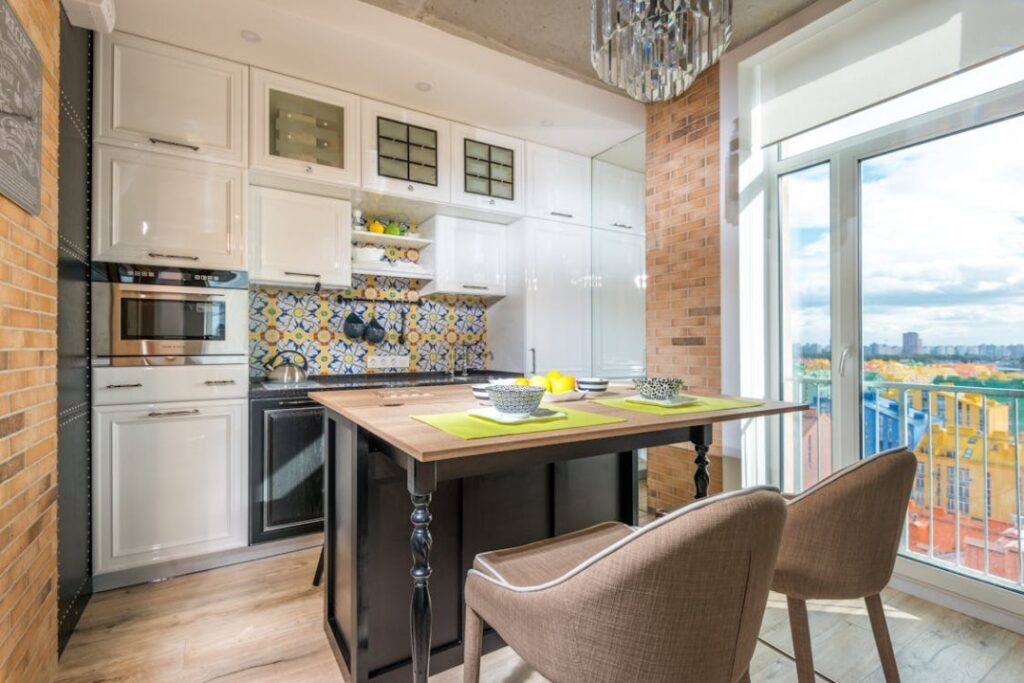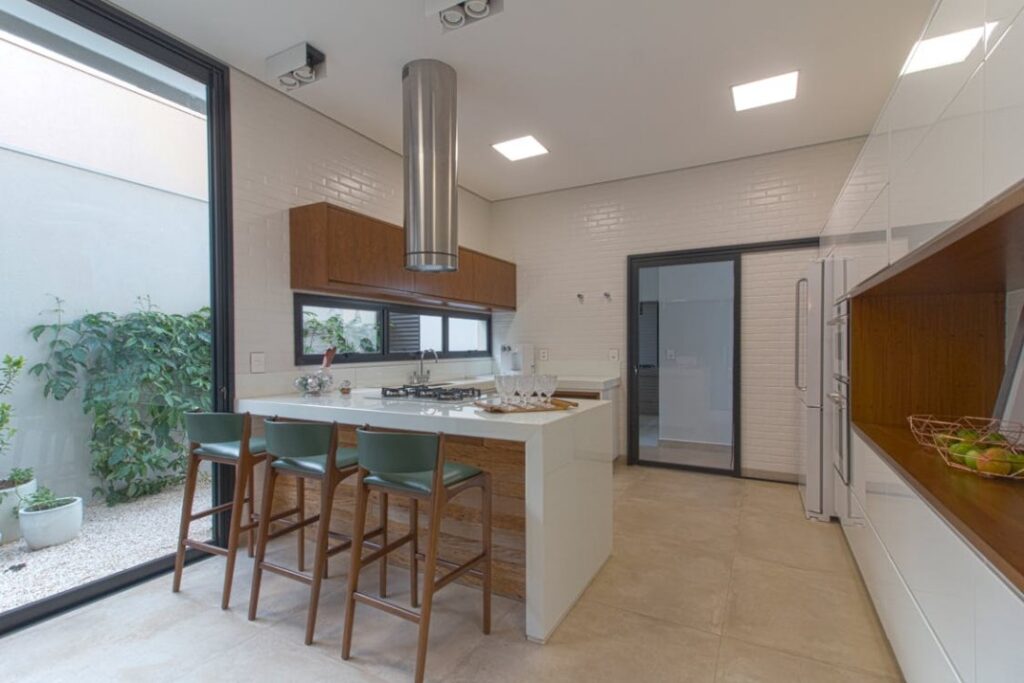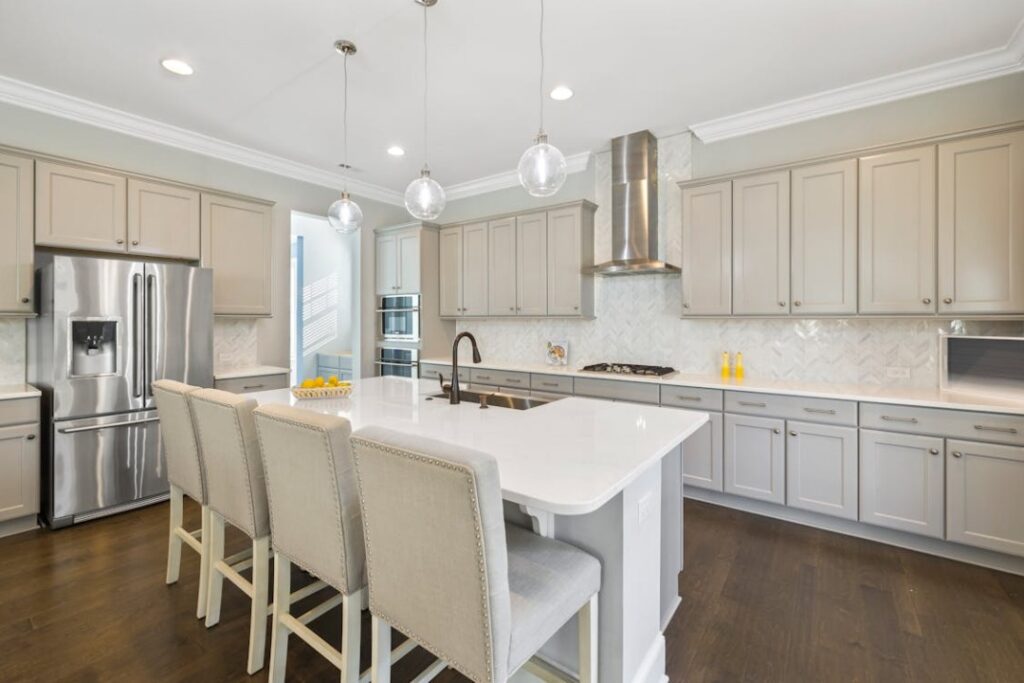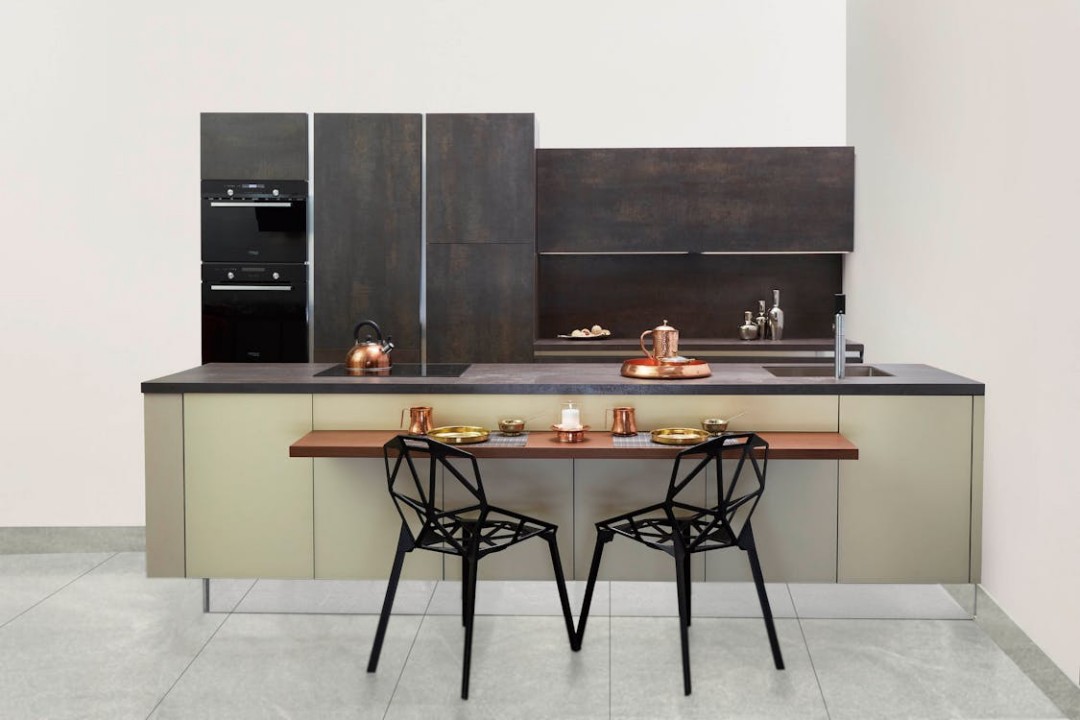Dreaming of a kitchen remodel, but a full upgradefeels out of reach?
Fear not!
Painting your cabinets is a budget-friendly and impactful way to completely transform the heart of your home.
With the right preparation and technique, you can achieve a professional, long-lasting finish that will leave you smiling.
Before you unleash your inner artist, meticulous prep work is essential. Here’s how to get started:
Clear the Workspace
Start your kitchen remodel by creating a clutter-free environment. Empty all cabinets and drawers, placing their contents in boxes or bins for temporary storage. Relocate any appliances that can be easily moved to ensure they don’t get in the way. For larger appliances that are not easily movable, cover them with protective sheets or plastic. Also, spread drop cloths over countertops and flooring to safeguard against paint splatters and spills.
Disassemble the Doors and Hardware

Next, focus on your cabinet doors and hardware. Using a screwdriver or a drill, carefully remove all cabinet doors and drawers. To prevent any mix-ups later, label each door and drawer with a piece of painter’s tape and a marker, indicating its original position. This simple step will save you from confusion during reassembly. Also, remove all hinges, knobs, and drawer pulls and store them in a sealed container or plastic bag. This ensures that all the hardware remains together and is easy to find when it’s time to reattach everything.
Deep Clean
Kitchen cabinets accumulate a lot of grime over time, from grease to food residue. To ensure a smooth paint application, you need to start with a spotless surface. Use a degreaser or a TSP (trisodium phosphate) solution to thoroughly clean the cabinets. Apply the cleaner with a sponge or cloth, scrubbing away any grease, dirt, or residue. Once cleaned, rinse the cabinets with clean water to remove any leftover cleaning solution. Finally, allow the cabinets to dry completely; this is crucial because any remaining moisture can affect the paint’s adherence and finish.
Sanding for a Smooth Canvas

Lightly sand all cabinet surfaces with 120-grit sandpaper. This step is crucial because it creates a slightly rough texture for the paint to adhere to, ensuring a smooth and long-lasting finish. Focus on removing any existing imperfections or blemishes, such as scratches, dents, or old paint chips. This not only improves the overall appearance but also ensures the new paint will bond properly to the surface. Once you’ve finished sanding, make sure to wipe away all the sanding dust with a damp cloth. This prevents dust particles from interfering with the primer and paint, which could lead to an uneven finish.
Prime Time

A high-quality primer is a game-changer when it comes to painting kitchen cabinets during your kitchen remodel. It ensures even paint application, improves adhesion and provides a uniform base coat, which is essential for achieving a professional look. Choose a primer specifically designed for kitchen cabinets, considering a stain-blocking formula if your cabinets are currently a dark colour. This type of primer will prevent any old stains or colours from bleeding through the new paint. Apply a thin, even coat of primer using a brush or roller, and let it dry completely before proceeding to the next step. This typically takes a few hours, but it’s essential to follow the manufacturer’s instructions for the best results.
Painting Like a Pro
Choose the Right Paint: Selecting the correct type of paint is important for achieving a professional finish. For cabinets, opt for high-quality, cabinet-specific paints that are formulated for durability and resistance to moisture, grease, and everyday wear-and-tear. These paints are designed to withstand the rigours of kitchen and bathroom environments, ensuring your cabinets remain beautiful and functional for years to come. When it comes to finish, satin or eggshell finishes strike an excellent balance between washability and a subtle sheen that adds a touch of elegance without being overly glossy.
Brushwork Basics: The tools you use can make a significant difference in the outcome of your painting project. Invest in high-quality brushes that are appropriate for your specific needs. For smooth surfaces, synthetic brushes are ideal as they provide a flawless finish without leaving brush marks. For intricate details or tight corners, an angled brush is perfect for precision work. When applying the paint, use thin, even strokes, and always follow the grain of the wood. This technique not only enhances the natural beauty of the wood but also ensures a smoother and more professional-looking finish.
Light Layers are Your Friend: Patience is key when painting cabinets during a kitchen remodel. Rather than applying thick coats of paint, which can lead to drips and an uneven finish, aim for multiple light layers. Typically, two to three thin coats will provide the best results. Allow ample drying time between each coat; this not only ensures each layer properly adheres but also minimizes the risk of imperfections. By building up the colour gradually, you’ll achieve a durable and aesthetically pleasing finish that looks like it was done by a professional.
The Final Touches
Once the final coat of paint is completely dry, reattach the hardware and carefully reinstall the cabinet doors and drawers. Stand back and admire your handiwork!
For a Flawless Finish, Consider the Experts
While painting cabinets offers a rewarding DIY project, sometimes professional intervention is the way to go. Oakridge Remodeling understands the transformative power of a kitchen remodel. Their team of home remodeling experts possesses the skills and experience to deliver exceptional results, exceeding your expectations. From comprehensive kitchen renovations to stunning bathroom remodels Oakridge Remodeling strives to transform houses into the perfect homes – all within Regina. Contact them today to discuss your vision and unlock the full potential of your kitchen.


